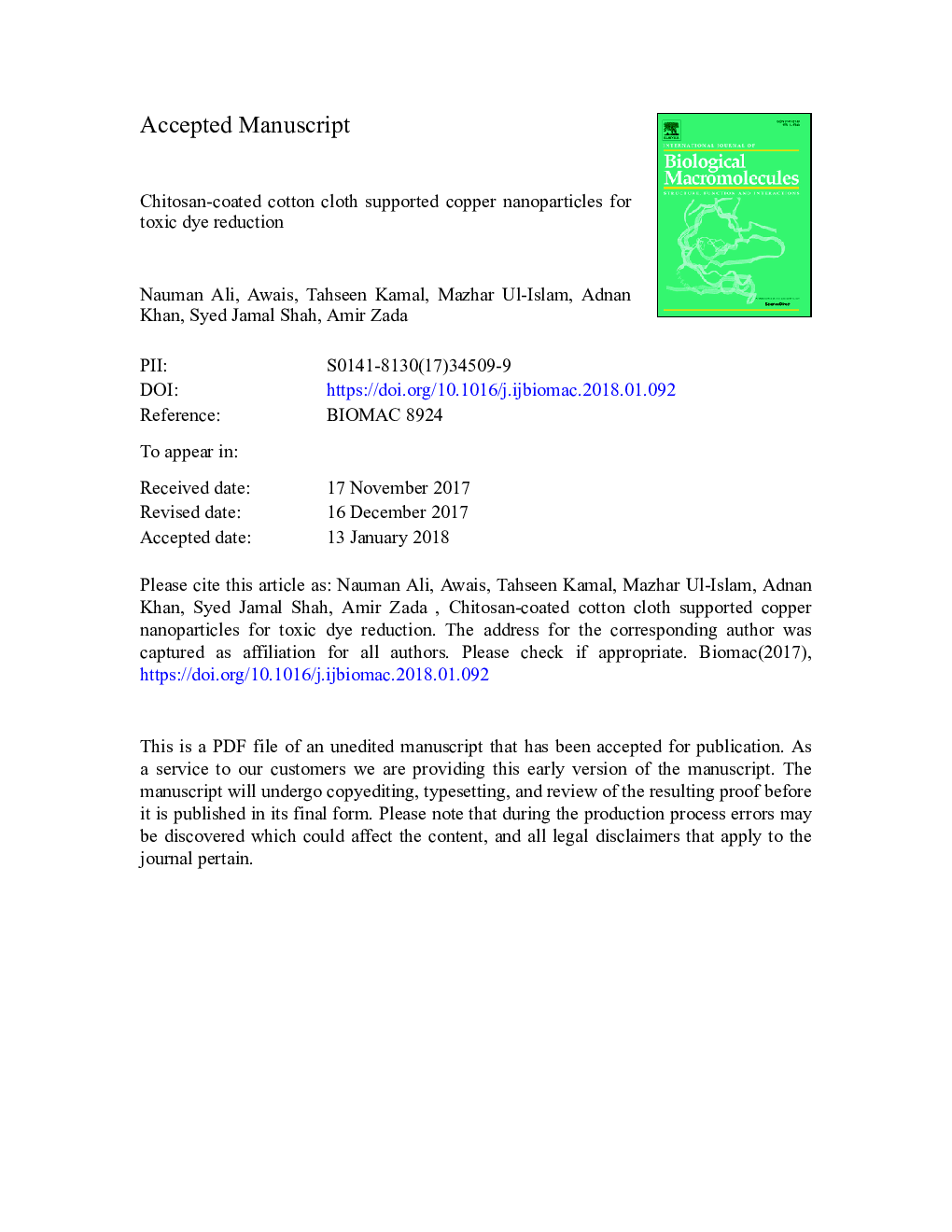| Article ID | Journal | Published Year | Pages | File Type |
|---|---|---|---|---|
| 8328082 | International Journal of Biological Macromolecules | 2018 | 28 Pages |
Abstract
A new route to fabricate cotton cloth (CC) as easily removable substrate for the synthesis of copper nanoparticles on its surface and its utilization in a toxic dye reduction is reported herein. A 1â¯wt% chitosan (Chi) aqueous solution was prepared and coated onto CC surface to prepare the ions affinity Chi-CC material. The Chi-CC was then kept in copper sulphate solution with three different concentrations (0.05â¯M, 0.1â¯M and 0.2â¯M) to interact with Cu2+ ions through -NH and -OH functional groups of the Chi chain. After sufficient time of the Cu2+ uptake, the Chi-CC was treated with 0.1â¯M NaBH4 solution which turned its color indicating well organization of the adsorbed ions into Cu-nanoparticles. The bare CC, Chi-CC and Cu/Chi-CC were spectroscopically examined via scanning electron microscopy, X-ray diffractometry, energy dispersive X-ray spectroscopy and thermo-gravimetric analysis. Afterward, Cu/Chi-CC was used in the Congo red (CR) dye reduction by NaBH4 as catalyst. The performance of the amount of the catalyst and its usage in a series of similar dye reduction was evaluated.
Related Topics
Life Sciences
Biochemistry, Genetics and Molecular Biology
Biochemistry
Authors
Nauman Ali, Awais Awais, Tahseen Kamal, Mazhar Ul-Islam, Adnan Khan, Syed Jamal Shah, Amir Zada,
